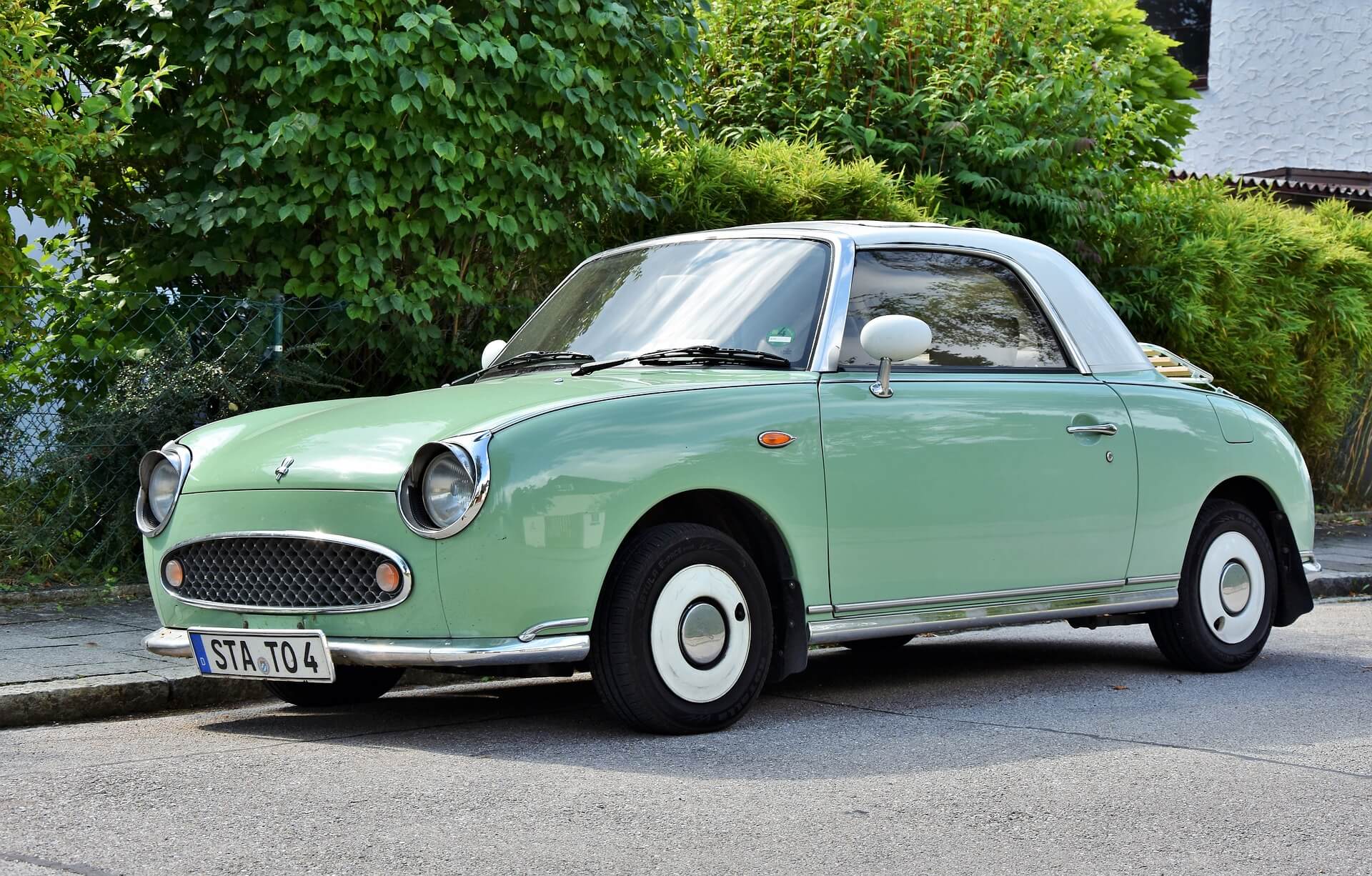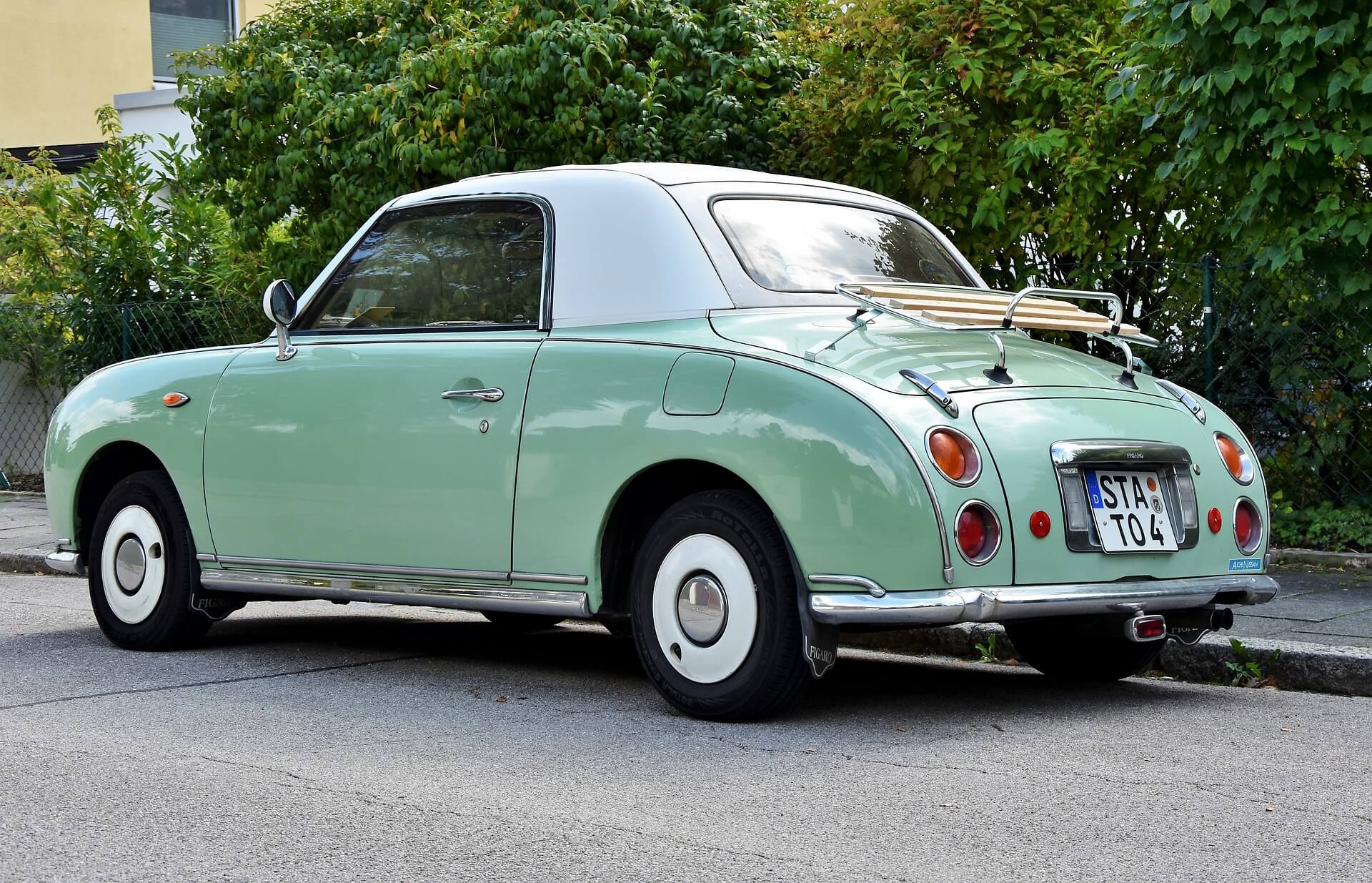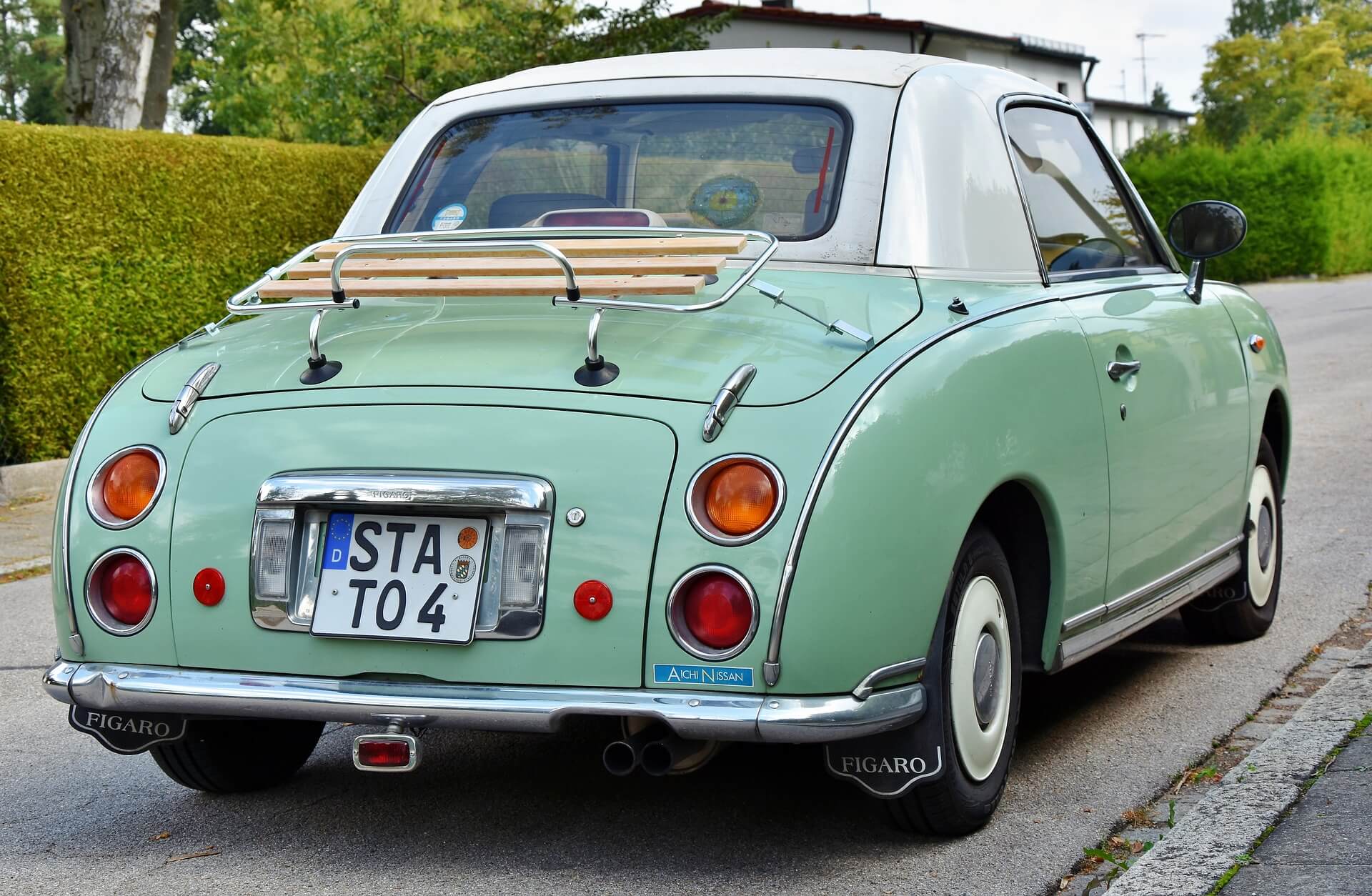The Little Japanese Car That Conquered Great Britain
Nicknamed ‘The Fig’ by its owners, this four-seat coupe was only produced in 1991 and has achieved cult status in Great Britain.

© Capri23auto
As the New York Times notes in a long article dedicated to the car, the Figaro is not so much a functional object as one of devotion. Perhaps it’s the fact that the design of the bonnet makes it look as if the car is smiling that means people treat these vehicles as if they were human, giving them nicknames like ‘Ms Figgy’ or ‘Lady Grey.’ Figaro fans often own more than one, too.
In Great Britain, the car is loved for its personality and eccentricity. In pastel colours (Mist Topaz, Emerald Green, Pale Aqua, and Lapis Grey to be precise, with each colour referring to a season) and with a white passenger compartment, this curved city car is miniature in size. It is both elegant and pleasant and has a large sunroof that opens fully.
Success beyond Japanese borders
Despite its toy-like appearance, the car offers all the modern comforts (for the early 90s at least): CD and tape player, leather seats, electric windows, power steering, chrome-plated accessories… There isn’t a huge amount of space in the back, but enough for it not to be a problem.
As the car manual is only available in Japanese, it’s fair to say that nobody at Nissan expected the car to be such a success. In 1988, they only intended to produce 8,000 copies of the car, and aimed it at an exclusively Japanese audience. But the Figaro was quickly adopted by celebrities (including Eric Clapton, who brought one back with him from Japan), a further 12,000 were made, and so considerably did demand exceed supply that lots were drawn to determine who would get one.
Precursor to the ‘neo-retro’ movement
The New York Times explains the success of the car by way of economic analysis; the fact that few eccentric cars were available to purchase in Great Britain left room for the importation of products. The car may have also won over the British public for a very pragmatic reason: the steering wheel is on the right, like in English cars. It’s also simpler–and therefore less expensive–to approve.
At the start of the 90s, Nissan also launched the BE-1, the Pao, and the S-Cargo alongside the Figaro. At the time, it became the forerunner of the ‘neo-retro’ movement that would, years later, see the reissue of old models of car (Mini, Fiat 500, etc.). The car might not be spotted in the USA, however, as it was banned until 2016 for not conforming to environmental and safety rules.

© Capri23auto

© Capri23auto
TRENDING
-
The Tattoos that Marked the Criminals of the Edo Period
Traditional tattoos were strong signifiers; murderers had head tattoos, while theft might result in an arm tattoo.

-
The Story of Sada Yacco, the Geisha who Bewitched Europe
Described by Dazed magazine as the first beauty influencer, she has been restored to her former glory since 2019.

-
Ito Jakuchu's Naturalist Paintings
From 15 September until 14 October 2018, the Petit Palais showcased the artist's iconic ‘Images of the Colourful Realm of Living Beings’.

-
Chiharu Shiota, Red Threads of the Soul
Last year, more than 660,000 people visited the retrospective 'Chiharu Shiota: The Soul Trembles' exhibit at the Mori Art Museum.

-
Studio Ghibli's Delicious Dishes Are More Than Just Details
Food, often inspired by the directors' favourite recipes, is a crucial element in the plot of these animated films.





